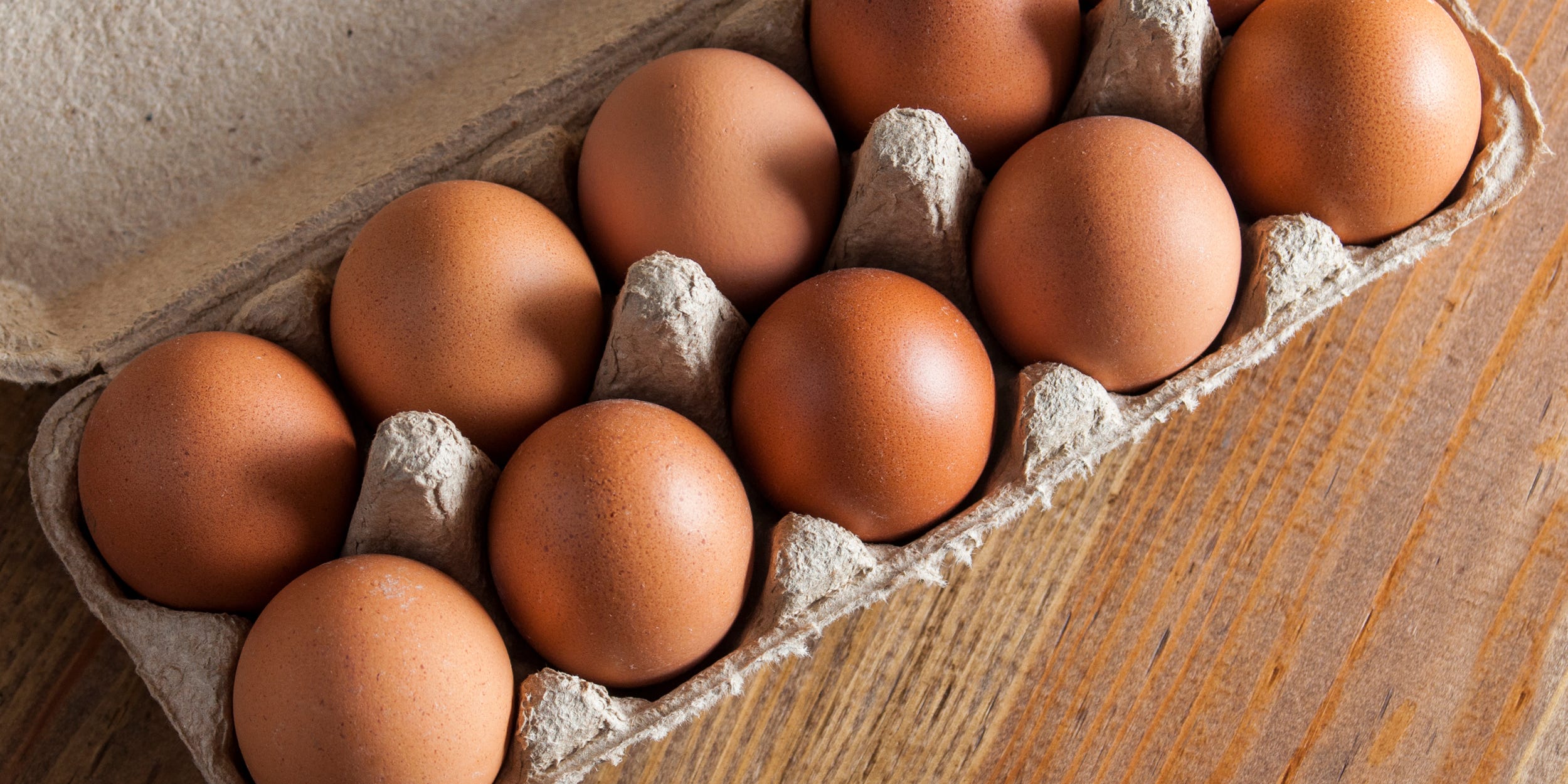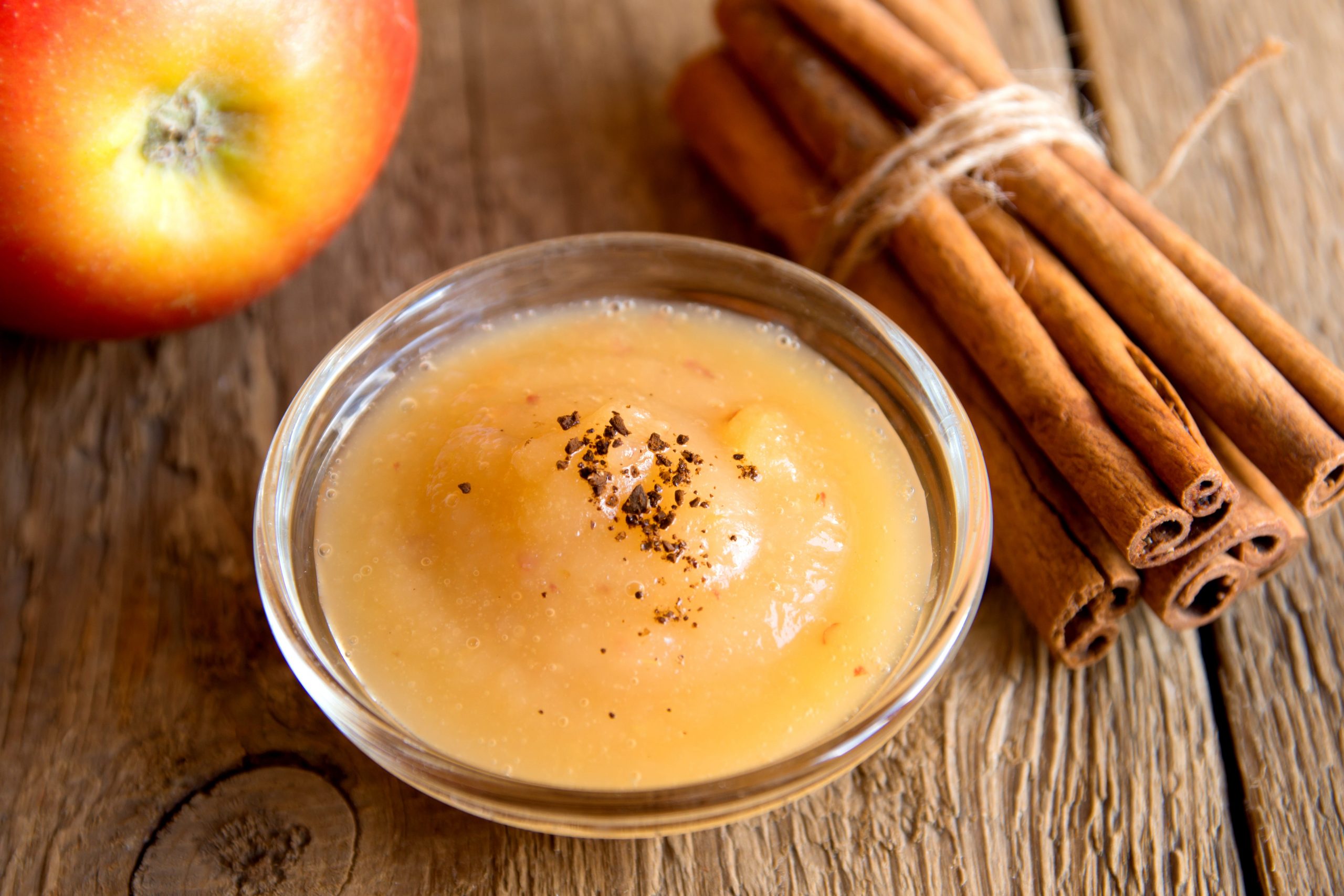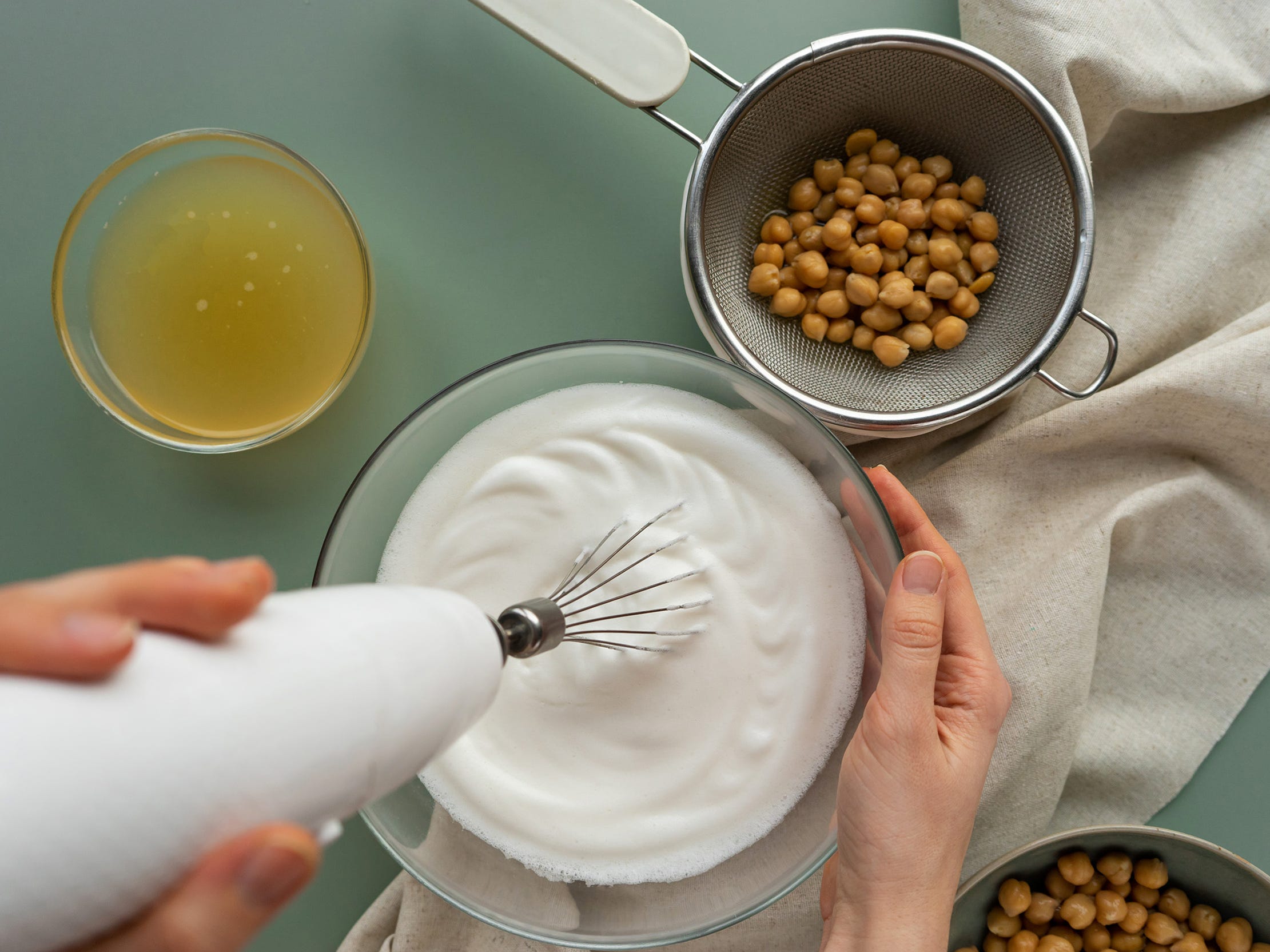
Aleshin_Aleksei/Shutterstock
- The most commonly used egg substitutes include apple sauce, mashed bananas, yogurt, and flaxseeds.
- The best way to decide on your alternative is by understanding what purpose the egg is serving in the recipe.
- Aquafaba, or chickpea liquid, is your best bet for substituting only egg whites.
- Visit Insider's Home & Kitchen Reference library for more stories.
No eggs? No problem. Whether you've got a food sensitivity, dietary restriction, or simply don't have any eggs on hand, there are plenty of replacements you probably have in your pantry right now.
There are a few things to consider when replacing eggs. The trick to deciding which egg substitute to use is understanding why the egg is being used in the recipe in the first place.
Once you've figured out its purpose, you'll also want to take into account taste. The last thing you want is for your egg substitute to overpower the flavor of whatever you're baking.
What do eggs do in baking?
Eggs play an important role in baking, and the best replacement comes down to determining what purpose the egg is serving.
"You have to know what the egg is doing in the recipe," says chef, author, and cooking teacher Amy Fothergill, adding that substitute can interact with other recipe ingredients and impact the overall flavor or texture of the dish.
Whole eggs add structure, texture, moisture, and volume to baked goods in three main ways:
- Binder: Helping to hold dry ingredients together and providing moisture
- Emulsifier: Acting as a thickening agent and providing body to a recipe
- Leavener: Giving "lift" and creating air pockets to help baked goods rise
When deciding on a replacement, it's important to understand that the finished product won't likely be an exact replica. But understanding what eggs bring to the table, and what result you want to achieve, is the first step in a successful swap:
| Substitute | Binder | Emulsifier | Leavener |
| Applesauce | X | X | |
| Mashed banana | X | X | |
| Aquafaba | X | X | X |
| Arrowroot powder | X | X | |
| Baking soda and vinegar | X | ||
| Carbonated water | X | X | |
| Yogurt or buttermilk | X | X | |
| Silken tofu | X | X | |
| Ground chia seed | X | ||
| Ground flaxseed | X | ||
| Commercial egg replacer | X | X | X |
1. Applesauce

Oksana Mizina/Shutterstock
The pectin found in applesauce acts as a binder. Since apples are high in sugar, it's an ideal choice for quickbreads, muffins, and pancakes.
Apples are not a leavener, so baked goods will be more dense and moist with every egg you replace. Beyond that, applesauce is high in sugar, so that will come through in the final product, but that's not necessarily the worst thing for certain items.
How to use it: To replace one egg, use ¼ cup of applesauce.
2. Mashed banana
Bananas work similar to applesauce in that they bind together dry ingredients and add moisture. The fruit's natural sweetness makes it ideal for sweeter baked goods.
If you're in need of a more neutral flavor, you can try another pureed fruit: mashed avocado.
How to use it: To replace one egg, use ¼ cup of mashed banana.
3. Yogurt or buttermilk
Plain yogurt or buttermilk can replace eggs in adding moisture and richness to a recipe. They work best in batter-type baking (think: brownies, cakes, drop cookies). Because yogurt and buttermilk contain acid, they can be used as a leavener with the addition of baking soda or powder.
How to use it: To replace one egg, use ¼ cup of yogurt or buttermilk. Add ¼ teaspoon of baking powder if you need a little lift.
4. Carbonated water
Carbonated water acts as a leavener by trapping air bubbles. It can also add moisture to a recipe and can be used in conjunction with other egg substitutes - particularly denser options like fruit purees - when replacing multiple eggs. This technique works in cupcake and cake batter, and can also work with pancakes, waffles, and quick breads.
How to use it: To replace one egg, use ¼ cup of carbonated water.
5. Baking soda and vinegar
The chemical reaction between baking soda and vinegar releases carbon dioxide and water, which can add lift to pancakes, cake, and quickbread batters. This combination "will give you rise, but if there's already sufficient baking soda in the recipe, it might rise and fall," says Fothergill.
How to use it: To replace one egg, combine one tablespoon vinegar with one teaspoon of baking soda.
6. Aquafaba

Kristina Ratobilska/Getty Images
Aquafaba is the liquid leftover after cooking chickpeas - the same liquid found in canned chickpeas. This substance can be used as a substitute for both whole eggs and egg whites.
When whipped, aquafaba is an accurate swap for meringues - just add a pinch of cream of tartar to stabilize it. Since its flavor is fairly neutral, it can be used in both sweet and savory applications.
How to use it: To replace one egg, lightly whip three tablespoons of aquafaba until foamy. For an egg white substitute, keep whipping to desired stiffness.
7. Arrowroot powder
Arrowroot powder is extracted from the South American Maranta arundinacea plant. It acts as a thickening agent and can also serve as a binder. Since it doesn't have any noticeable flavor, it won't interfere with the taste of your recipe.
Arrowroot powder is high in starch, and you can use cornstarch, tapioca powder, and potato starch in the same way. These ingredients can add structure to cakes and body to custards.
How to use it: To replace one egg, add two tablespoons of arrowroot powder to three tablespoons of water.
8. Ground chia seed
The tiny seeds of the chia plant are packed with omega-3 fatty acids and fiber, and can also be used as a binder for breads, cookies, and pancakes without adding any noticeable flavor. To emulate the richness of an egg, Fothergill recommends adding a pinch of vegetable oil.
How to use it: To replace one egg, combine a tablespoon of ground chia with two tablespoons of warm water and one tablespoon of vegetable oil.
9. Ground flaxseed
Similar to chia seeds, ground flax mixed with water has a gelatinous property that allows it to hold other ingredients together, like binding meatloaf or crab cakes. Flaxseed can be purchased pre-ground, or you can opt to grind it yourself by adding whole flax seeds to a coffee grinder. It does have a stronger nut-like flavor that can be an excellent addition to banana bread or oatmeal cookies.
How to use it: To replace one egg, add one tablespoon of ground flax seeds with two to three tablespoons of water and let sit for 10 minutes.
10. Silken tofu
This popular vegetarian protein source is best used as a binder and adding moisture. Silken tofu can be used as a replacement for eggs in foods that are typically dense, like brownies, cheesecake, and custard.
How to use it: To replace one egg, use a ¼ cup of silken tofu.
11. Commercial egg replacer
Pre-made egg replacers will vary in formula, but they are typically made of starch and some type of leavening agent, allowing it to mimic the binding and lifting of a real egg. Some popular brands include Bob's Red Mill and Ener-G.
Just make sure to read the ingredients list carefully to ensure you aren't sensitive to any of its components.
How to use it: Since commercial egg replacements vary, follow the manufacturer's instructions.
Insider's takeaway
Replacing eggs in a recipe might be intimidating the first few times, but it is possible to use a substitute with great results. You may have to tinker with ratios and use several different alternatives to achieve the texture you're shooting for, so don't be afraid to experiment.